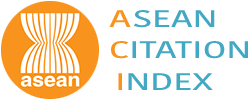The Correlation of Self-Care Practices in the Online Learning Environment of Teacher Education Students
DOI:
https://doi.org/10.57260/csdj.2025.268555Keywords:
Correlation analysis, General weighted average (GWA), Online learning, Teacher education students, Self-care practicesAbstract
This research examined the self-care practices in online learning among teacher education students during the Academic Year 2021-2022. Specifically, it investigated the significant relationship between the respondents' profiles and their self-care practices in online learning. Data were collected using a questionnaire as the principal tool. The gathered data were analyzed using appropriate statistical tools, including correlation analysis. The results indicated that the respondents were largely female, mostly enrolled in the Bachelor of Secondary Education program, belonging to the Superior Group, and from middle-income families. Additionally, the study found that self-care practices were generally maintained at a good level despite the challenges posed by the pandemic. Chi-square analysis revealed significant relationships between self-care practices and variables such as sex, academic program, birth order, and socio-economic status. Based on these findings, the study recommends the use of infographic materials to promote good self-care practices in online learning among students.
Downloads
References
Brown, B., Gude, W.T., Blakeman, T., Veer, S. N. V., Francis, J. J., Lorencatto, F., Presseau, J., Peek, N., & Darker-White, G. (2016). Clinical Performance Feedback Intervention Theory (CP-FIT): a new theory for designing, implementing, and evaluating feedback in health care based on a systematic review and meta-synthesis of qualitative research. Implementation Sci, 14(40), 1-25. Retrieved from https://implementationscience.biomedcentral.com/articles/10.1186/s13012-019-0883-5 DOI: https://doi.org/10.1186/s13012-019-0883-5
Coolidge, F. L. (2019). The Short-Form of the Coolidge Axis II Inventory (SCATI): Manual. Colorado: Colorado Springs.
Csatari, J. (2020). Inactivity is worse for your health than smoking, study says. Eat This, Not That. Retrieved from https://www.eatthis.com
Fredricks, J. A. (2014). Eight Myths of Student Disengagement: Creating Classrooms of Deep Learning. Corwin Press. DOI: https://doi.org/10.4135/9781483394534
Harley, M. (2017). Setting Boundaries: The Key to Self-Care. Galene Company.
Hurst, K. (2014). The Secret Law of Attraction: Master the Power of Intention. Greater Minds. Retrieved from https://www.thelawofattraction.com
Jan, W. S. (2022). Self-Care Can’t Always Be There (but it needn’t be far away). The Practising Midwife. DOI:10.55975/PMZW9229 DOI: https://doi.org/10.55975/PMZW9229
Lee, J. (2020). Mental health effects of school closures during COVID-19. The lancet child & adolescent health, 4(6), 421. DOI: 10.1016/S2352-4642(20)30109-7 DOI: https://doi.org/10.1016/S2352-4642(20)30109-7
Kreilein, A. (2017). Faith and Resilience: Understanding the Power of Belief. New Mexio.
Michael, R. (2018). What Self-Care Is — and What It Isn’t. World of Psychology. Retrieved from https://psychcentral.com/blog/what-self-care-is-and-what-it-isnt-2/
Smith, J. K., & Johnson, R. H. (2018) The Impact of Technology on Communication and Collaboration in Organizations. International Journal of Business Communication, 46, 312-330. Retrieved from https://www.scirp.org/reference/referencespapers?referenceid=3792175
Smith, J. Q., Jones, M. R., & Brown, C. D. (2020). Advancing Managerial Evolution and Resource Management in Contemporary Business Landscapes. Journal of Management Studies, 58, 1-25. Retrieved from https://www.scirp.org/reference/referencespapers?referenceid=3581547
Strommen, J. (2020). The importance of staying socially connected during physical distancing. North Dakota State University Extension. US.
Williams, D. R., Lawrence, J. A., & Davis, B. A. (2019). Racism and Health: Evidence and Needed Research. Annual Review of Public Health, 40, 105 – 125. Retrieved from https://www.annualreviews.org/content/journals/10.1146/annurev-publhealth-040218-043750 DOI: https://doi.org/10.1146/annurev-publhealth-040218-043750

Downloads
Published
How to Cite
Issue
Section
Categories
License
Copyright (c) 2025 Community and Social Development Journal

This work is licensed under a Creative Commons Attribution-NonCommercial-NoDerivatives 4.0 International License.
1. Articles, information, content, images, etc published in the “Community and Social Development Journal” are copyrighted by the Community and Social Development Journal, Chiang Mai Rajabhat University. In order to properly distribute the articles through print and electronic media, the authors still hold the copyright for the published articles under the Creative Commons Attribution (CC BY) license, which allows the re-distribution of the articles in other sources. References must be made to the articles in the journal. The authors are responsible for requesting permission to reproduce copyrighted content from other sources.
2. The content of the articles appearing in the journal is the direct responsibility of the article authors. The editorial board of the journal does not necessarily agree with or share any responsibility.













